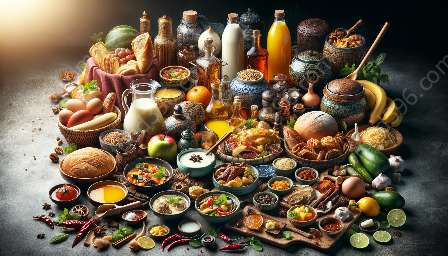Japanese cuisine is deeply rooted in tradition and is celebrated for its delicate flavors, meticulous preparation, and artful presentation. From the iconic sushi and sashimi to the comforting ramen and the crispy tempura, Japanese cuisine offers a rich tapestry of regional variations and a fascinating history that reflects its food culture and heritage.
Regional Variations in Food Culture
Japan's geography and diverse climate have given rise to a wide range of regional variations in its food culture. Each region boasts its own unique local ingredients, cooking techniques, and traditional dishes that showcase the distinct flavors and culinary traditions.
Hokkaido
Located in the northernmost part of Japan, Hokkaido is known for its bountiful seafood, dairy products, and agricultural produce. The cold climate has influenced the hearty and warming dishes that are popular in this region, such as seafood stew and grilled lamb.
Kansai
Kansai, the cultural and historical heart of Japan, is famous for its refined and elegant cuisine. The region is home to iconic dishes like okonomiyaki, a savory pancake with various toppings, and takoyaki, delicious octopus-filled balls that are a favorite street food.
Chugoku
Chugoku, on the western coast, is renowned for its diverse range of seafood and seasonal vegetables. Dishes like Hiroshima-style okonomiyaki and seafood miso soup highlight the region's distinct culinary identity.
Kyushu
Kyushu, the southernmost of Japan's main islands, boasts a rich food culture characterized by bold and spicy flavors. The region's famous dishes include tonkotsu ramen, mentaiko (spicy pollock roe), and yakitori skewers bursting with umami.
Okinawa
Okinawan cuisine reflects the unique traditions and influences of the Ryukyu Kingdom. The region's dishes showcase local ingredients such as bitter melon and pork, with notable specialties like goya champuru and Rafute (slow-cooked pork belly).
Food Culture and History
The origins of Japanese cuisine can be traced back to ancient traditions and influences that have shaped the culinary landscape over centuries. Traditional Japanese cooking revolves around the principle of washoku, which emphasizes simplicity, seasonal ingredients, and meticulous presentation.
Early History
The early history of Japanese cuisine was influenced by the introduction of rice cultivation, soybean cultivation, and the consumption of fish and shellfish. The influence of Buddhism also played a significant role in shaping dietary customs and the concept of mindful eating.
Feudal Era
The feudal era brought about the development of kaiseki, a multi-course dining experience that reflects the changing seasons and showcases the skill of the chef. During this time, regional variations in food culture began to emerge as local ingredients and cooking styles were celebrated.
Modern Era
The modern era saw the fusion of traditional Japanese cuisine with global influences, leading to the creation of dishes like tempura and the popularization of sushi. The rich food culture and history of Japanese cuisine continue to evolve, with a strong emphasis on preserving culinary traditions while embracing innovation.
Japanese cuisine is a testament to the country's deep connection to nature, its reverence for seasonal ingredients, and its dedication to the art of dining. By exploring the regional variations and understanding the intricate food culture and history, one can truly appreciate the depth and diversity of Japanese cuisine.

